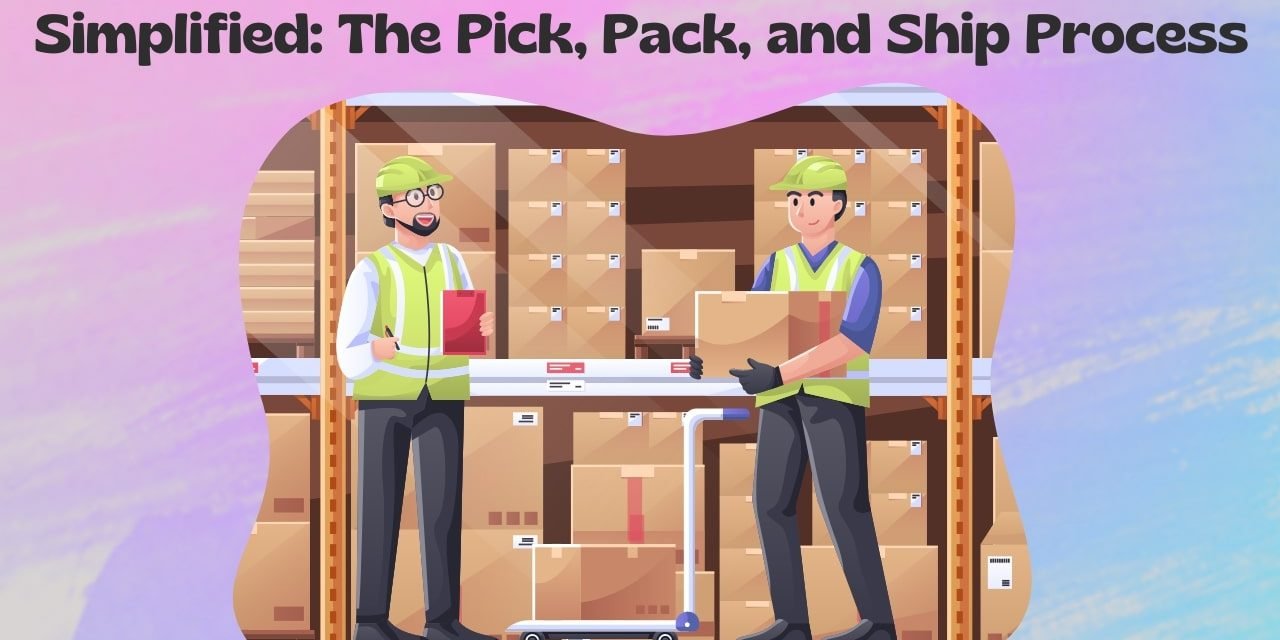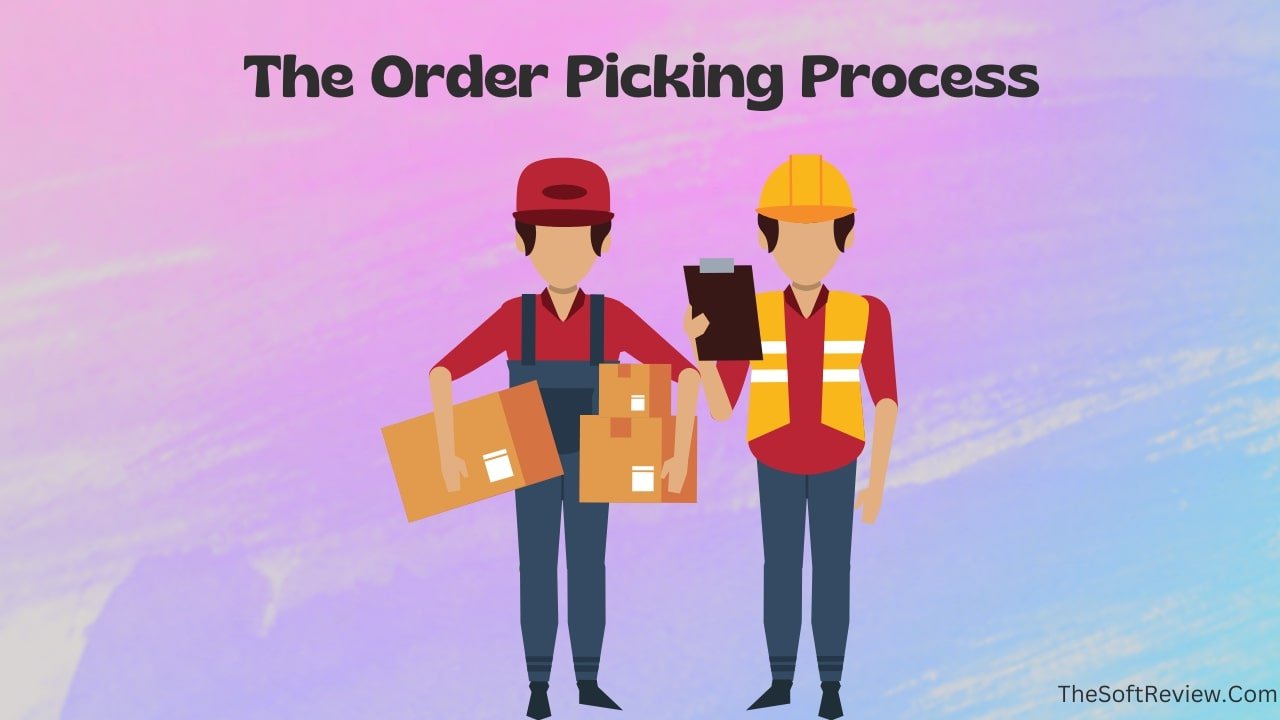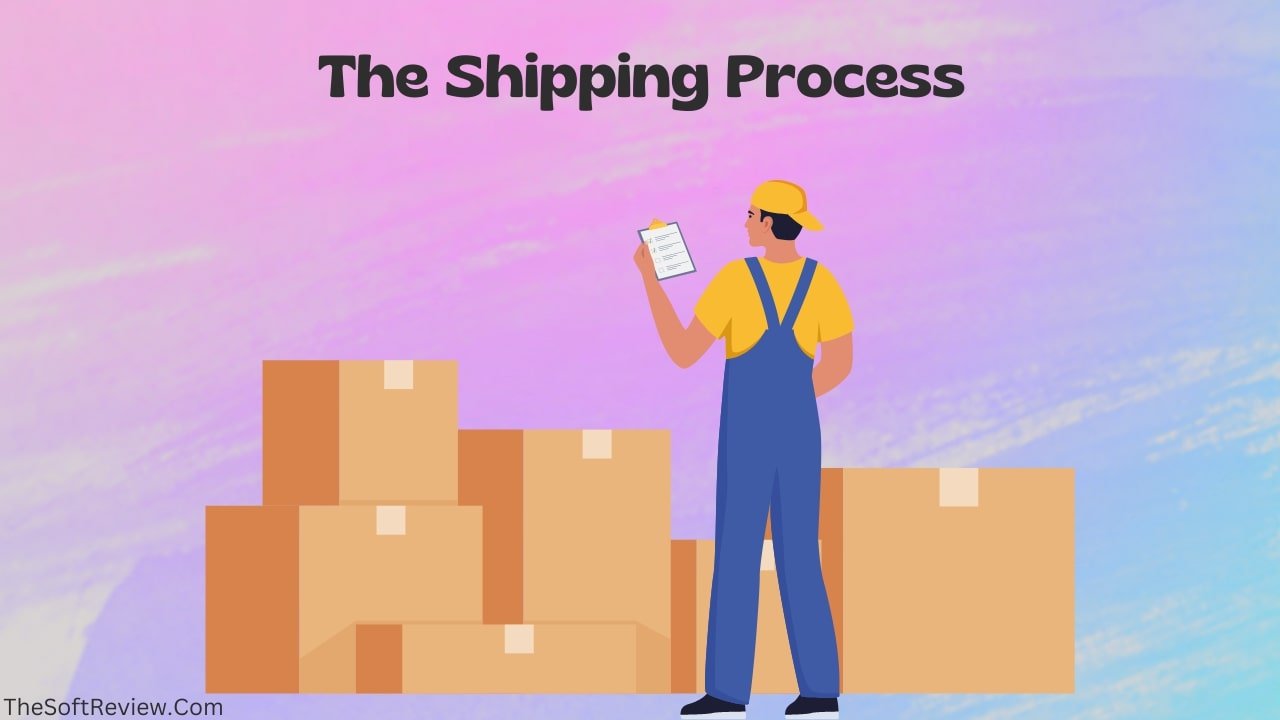
What is the Pick Pack and Ship Process in a Warehouse?

Are you tired of missed deliveries and angry customers due to inefficient order fulfillment processes? Look no further, as the solution lies in the pick, pack, and ship process.
The pick, pack, and ship process is the backbone of many warehouses and is crucial for ensuring the timely and accurate delivery of products.
This blog post will explore how a warehouse’s picking, packing, and shipping process works so that you can improve these essential parts of your supply chain management.
What is the Pick Pack and Ship Process in a Warehouse?
Picking, packing, and shipping are three crucial procedures of warehouse management that entail grabbing the right items from the warehouse, packaging them up, and carefully shipping them to their customers. We can define the pick, pack, and ship activities as the building blocks of the entire supply chain management framework, as the three-step process ensures the right products are delivered to the right customers within time.
Let’s learn about picking, packing, and shipping in detail, and then we will take a look at different approaches to managing all the activities:
1. Overview of the Picking Process

The picking process means finding the right items from the warehouse and sending them to the packing station. Suppose you have stored different items in the warehouse; the pricking process involves identifying the right products according to the order list.
It’s a crucial warehouse activity because if you pick the wrong product, the customer will not get what he ordered. Once you pick all the products correctly, you transfer them for packing.
2. The Packing Process

The packing process involves checking whether all ordered items are picked and if everything is fine, packing them safely, and preparing them for shipping. When packing orders in a warehouse, workers select the correct size boxes or bags depending on what is being shipped.
Then they seal and level up the packages according to order requirements and ensure they are securely stacked and ready for transport.
3. The Shipping Process

The shipping process is where your products are selected, packaged, and ready to be delivered to the customers. While shipping, it is essential to ensure that packages are sent out on time and minimize damage and breakage, so all the customers get their orders as expected.
The shipping process also involves communicating with the customers and informing them about the estimated delivery time to build a good relationship.
Now let’s talk about how companies of all sizes manage these three warehouse activities regularly and learn the whole system:
Different Approaches of Pick Pack Ship System in a Warehouse
1. The Manual Ways of Pick, Pack, and Ship
Most mini and small businesses follow the manual picking, packing, and shipping processes. It involves a series of steps performed manually by employees or workers to fulfill customer orders. These steps are:
A. Pick:
As a mini or small business, the warehouse size is small, and workers physically go to the warehouse or storage area to select the items specified in the customer order.
B. Pack:
The workers package the items securely, including any necessary padding or cushioning to prevent damage during shipping.
C. Ship:
Advantages of manual Process:
- Flexibility: Manual processes allow greater flexibility in fulfilling special or custom orders, as workers have more control over the process.
- Lower costs: Manual processes often require fewer capital investments in technology or equipment, making it a more cost-effective solution for smaller operations.
- Personal touch: Workers can provide a personal touch to the customer experience, such as adding a handwritten note or small gift to an order.
Disadvantages of manual Process:
- Time-consuming: Manual processes can be slower and more labor-intensive, resulting in longer lead times and decreased efficiency.
- Increased error rate: Human error is more likely in manual processes, resulting in incorrect or damaged items being picked and shipped, leading to customer complaints and returns.
- Limited scalability: Manual processes can become overwhelmed and inefficient as the volume of orders increases, making it difficult for operations to grow and scale.
The manual way of picking, packing, and shipping requires no advanced technology, and it can seem time-consuming and labor-intensive. However, the process is still ideal for smaller warehouse operations.
For instance, if you have a small physical store and get only a few orders online, you can happily pick up your team from the warehouse, pack, and ship them without needing a worker.
2. The Modern Way of Pick, Pack, and Ship
Modern picking, packing, and shipping involve technology and automation to streamline the order fulfillment process. It typically includes:
A. Pick:
In a modern way, after receiving an order, a warehouse worker goes to the warehouse and picks the right products using barcode scanning or RFID (Radio Frequency Identification) tagging according to the order list.
On the other hand, a company can use pick-to-light, pick-to-voice technology for batch picking or even send a robot to pick up the products from warehouse shelves using automated storage and retrieval systems!
B. Pack:
When the picking process ends, a modern e-commerce business uses warehouse management software to check whether all the products are packed correctly. That business can also use automated packaging machines or robots for packaging the items quickly, reducing the risk of human error and improving efficiency.
C. Ship:
The modern way of shipping is fun. An e-commerce business uses pick-and-pack software to automatically generate a shipping label, including all necessary information, such as the recipient’s name and address, tracking number, and special shipping instructions.
After all the steps are covered, businesses choose third-party pick and pack services like DHL or ship the product directly, track the shipping status, and communicate with the customer and shipping service provider in real-time using the same shipping software.
Advantages of the modern process:
- Increased efficiency: Adopting advanced technology can help in wave picking, proper packing, and generating a packing slip instantly, significantly increasing the speed and efficiency of the fulfillment process, resulting in faster lead times and improved productivity.
- Reduced errors: Using technology like bar code scanning or RFID tracker helps reduce the risk of human error, improving accuracy and reducing the need for returns or corrections.
- Improved customer experience: Mordanaized pick, pack, and ship processes can provide real-time updates and tracking information, improving the overall customer experience.
Disadvantages of the modern process:
- High cost: Implementing modern technology and automation can be a significant capital investment, making it a more expensive solution for smaller operations.
- Technical challenges: Implementing and integrating new technology and automation can be complex, requiring specialized employee training and potentially leading to technical difficulties or downtime.
The modern way of picking, packing, and shipping can significantly increase efficiency, reduce errors, and improve the customer experience. However, it often requires a more significant capital investment in technology and equipment and may require specialized employee training.
So let’s take a look at the aspects you need to consider while going with either the manual or modern way:
Things to Consider While Choosing the Ideal Approach of Picking, Packing, and Shipping
When choosing between manual and modern ways of picking, packing, and shipping, several factors should be considered, including:
1. Order and Sales Volume with Complexity:
The first thing you should consider is how many orders you handle daily. Adopting the modern picking, packing, and shipping method would be beneficial if you get many repetitive orders daily.
At the same time, manual processes would be more cost-effective with lower order volumes or if you have special or custom orders requiring a personal touch.
2. Cost of Adoption:
It would be best if you considered each solution’s cost, including equipment, technology, and employee training. It will help you determine which option is more cost effective for your operation. Adopting technology such as inventory management software or pick-and-pack software would be inefficient if your business size is not that large.
3. Customer experience:
Measuring customer experience is another aspect to consider. You must be aware of how each option will impact the customer experience, including the level of accuracy and speed of delivery, as well as the level of personalization provided.
4. Logistics and Scalability:
You have to consider the logistics of each option, including the availability of equipment and technology, shipping carrier integration, and access to warehouse space. Also, consider the ability of each opportunity to scale and adapt as your business grows and choose the solution that best meets your future needs.
By now, you get an idea of this crucial part of warehouse and inventory management and know which way is ideal for you to manage the processes. Now let’s talk about the benefits of good pick, pack, and Ship:
Advantages of Efficient Picking, Packing, and Shipping Management
When picking, packing, and shipping in a warehouse are done correctly, there are many advantages for businesses:
1. Improved Customer Satisfaction:
When picking, packing, and shipping processes are optimized, it leads to picking batch orders, packing them with accuracy, and ensuring safe and faster delivery. All these times help to improve customer satisfaction levels as customers receive their orders on time.
2. Increased Productivity:
When each activity is highly monitored and optimized, a business can increase the warehouses’ productivity and efficiency as fewer workers are needed, and orders can be filled much quicker.
3. Decreased Errors and Costs:
Automated pick and pack process or deploying well-trained workers, picking, packing, and shipping systems can help reduce labor and materials errors and costs.
Let’s talk about streamlining your warehouse’s pick, pack, and ship activity.
How Can You Improve Your Picking, Packing, and Shipping Process and Warehouse Management?
1. Use Automation Systems if Possible:
Automation in your warehouse can significantly improve the speed and accuracy of picking, packing, and shipping operations. For instance, you can use automated storage and retrieval systems (AS/RS).
It can automatically store products in a specific warehouse section and quickly retrieve them when needed. You can also use automated conveyor systems to transport products between warehouse areas.
2. Utilize Advanced Technology and Streamline Processes:
Adopting technology can help improve the picking, packing, and shipping process accuracy and speed. For example, you can use inventory management software or pack software with barcode scanners or RFID tags to quickly and accurately identify products throughout the warehouse floor.
Similarly, integrating your picking system with pick-to-light and voice picking can reduce the time and effort required to pick products.
The whole thing can be done using a warehouse management system (WMS), which will help you streamline inventory management and improve the overall picking, packing, and shipping process.
3. Establishing Picking and Packing Methods:
You can implement rules and guidelines and ensure employees follow them while picking, packing, and shipping products.
For instance, establishing a pick, pack, ship system would allow your employees to wave picking using pick and pack software. It will eventually reduce the likelihood of mistakes and delays. It can also help new employees to cope with your warehouse activities.
4. Enhance Communication:
Effective communication is critical for the smooth operation of a warehouse. You must set up a centralized communication channel so employees can communicate quickly and easily.
To do that, you can use radios or messaging systems to allow employees to communicate with each other in real time. Good communication helps reduce errors and delays, improve efficiency, and create a safer work environment.
5. Train Employees:
Ensuring the appropriate training for all your employees is essential to streamline your warehouse systems so that any advanced technologies you use can be effective.
For instance, you should train your employees on the pick-pack ship process using advanced technologies; it will also help employees do their jobs efficiently and accurately. Investing in employee training can help you create a more skilled and engaged workforce.
Final Words
The picking, packing, and shipping processes are crucial in a warehouse setup that ensures all orders are safely delivered to the customers on time.
And when you understand these core warehouse operations will help you adopt the best technology and perform inventory management tasks more efficiently, leading to handling larger orders while reducing manual labor costs.
Frequently Asked Questions
1. What Is E-Commerce Fulfillment?
E-commerce fulfillment is receiving online orders from customers and delivering the products safely. The process entails key warehouse activities such as picking the product from warehouse shelves, packing it appropriately, and delivering it on time.
E-commerce order fulfillment also includes managing return strategy and providing good customer support.
2. How Do I Pick Faster In A Warehouse?
To pick faster in a warehouse, you have to design your warehouse simply and put the products intuitively so that you can find an item easily when needed. You can also adopt advanced technology like “light-to-pick” to pick faster in a warehouse.
It’s a technology that allows you to set LED lights on your warehouse shelves, lighting up and producing a beeping sound to indicate the pick locations throughout the work.
3. How To Do Quality Control Before Shipping A Product?
You can ensure quality control before you ship a product by setting up some quality rules and following them correctly. For instance, you can set a direction to check a product twice before it is sent to ship to ensure the best product condition.
You can also tell your employees to maintain that all government and customer policies remain covered throughout the shipping process.




















